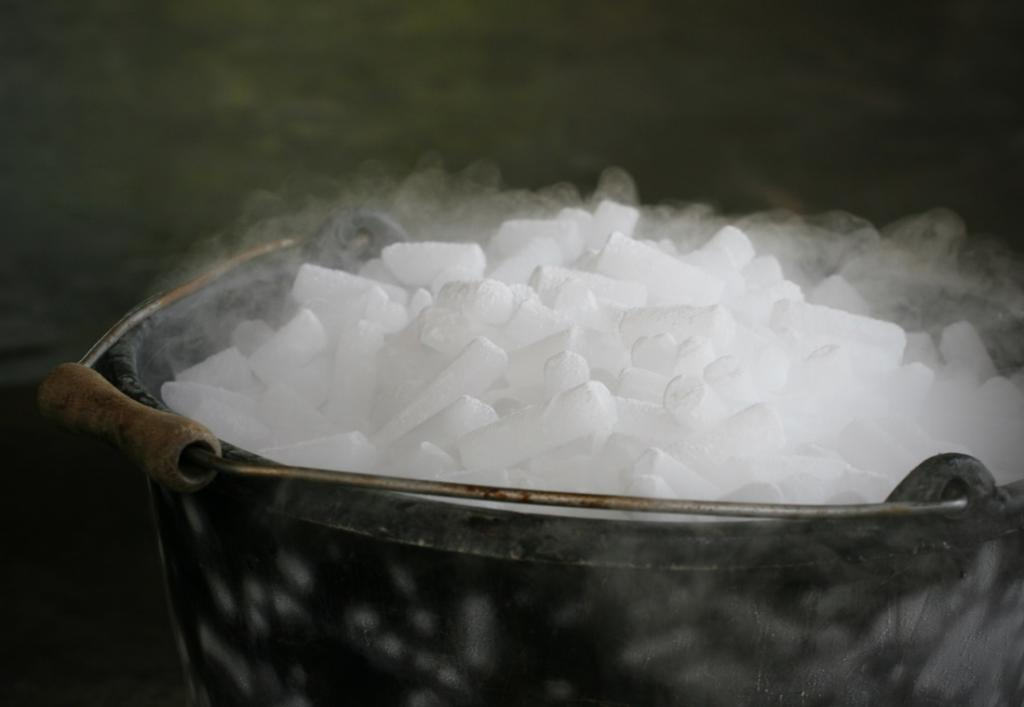





Copyright infringement not intended
Picture Courtesy: https://www.downtoearth.org.in/news/food/what-is-dry-ice-at-the-centre-of-the-gurugram-restaurant-incident-94801
Context: The incident involving the consumption of dry ice at a Gurugram restaurant raises significant concerns about the proper handling and awareness of this substance.
About Dry Ice
Science Behind Dry Ice
Safety Considerations
Applications of Dry Ice
|
Environmental Impact: While CO2 is a greenhouse gas, the amount used in dry ice production is relatively small. Additionally, the CO2 released during sublimation eventually returns to the atmosphere, making dry ice a somewhat closed-loop system from an environmental perspective. |
Conclusion
|
PRACTICE QUESTION Q. A sealed container initially contains both dry ice and liquid water at atmospheric pressure. The container is left unopened at room temperature. Over time, what will happen to the contents? A) The dry ice will melt completely, and the water will remain unchanged. B) The dry ice will sublimate completely, and the water will remain unchanged. C) The dry ice will partially melt, and the water will partially freeze. D) The dry ice and water will coexist in a stable equilibrium. Answer: B Explanation: The correct answer is (b) The dry ice will sublimate completely, and the water will remain unchanged. Dry ice is the solid form of carbon dioxide (CO2), which sublimates or transitions directly from a solid to a gas at temperatures above -78.5°C under atmospheric pressure. This process is known as sublimation. Room temperature is well above this, so the dry ice will sublimate completely. On the other hand, liquid water at room temperature will remain unchanged as it is already in its stable state under these conditions. It will neither freeze (which would require temperatures below 0°C) nor evaporate completely (which would require temperatures above 100°C under atmospheric pressure). Therefore, the water will remain unchanged. |






© 2025 iasgyan. All right reserved